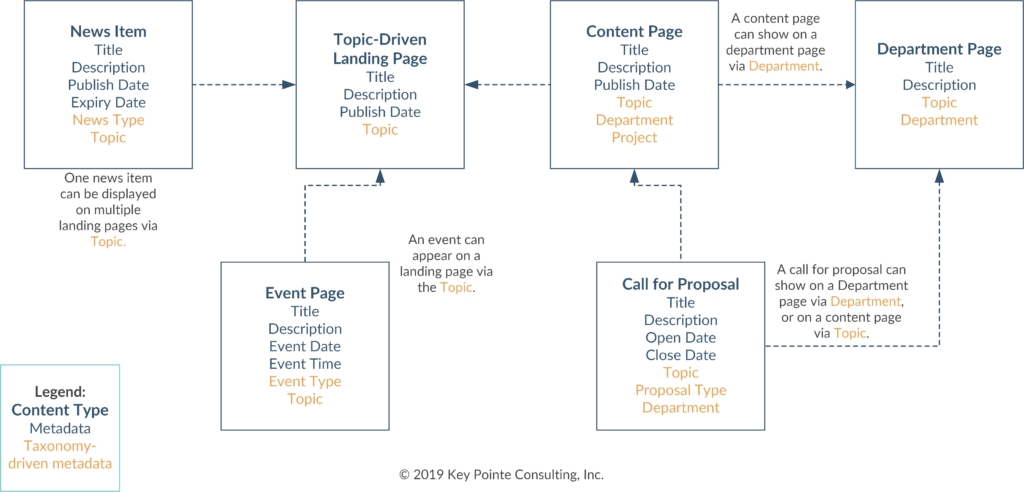While we were giving the Gather Content presentation on Using Information Architecture and Taxonomy to Meet Strategic Goals, one question someone asked was, “What’s the difference between content types and taxonomy?” This is where we say, “Great question!”
Content types and taxonomy are all part of a site’s content model. A content model defines all the content types, metadata, and relationships between different content on a site.
You might notice I’ve used a bit of jargon here: content model, content types, relationships, metadata. These concepts all come from domain modeling. As Alec Sharp would put it for domain modeling, we have:
- Things (content types)
- Facts about things (metadata or some might say attributes)
- Relationships between things (established through metadata
All of these make up the content model.
Where does taxonomy come into play? Taxonomy is metadata, or an attribute, of a content type. Taxonomy, in its very essence, is a pre-defined list that we use to categorize content.
Content types define the things on your site. Metadata tells you what you need to know about content types. Taxonomy is a type of metadata. So what’s the difference between content types and taxonomy? A content type defines what content you’ll have on your site and what you need to know about it. Some of what you need to know about it needs to be driven through pre-defined lists, or taxonomy.
Need an example?
In this example, each box represents a content type. The name of the content type is in bold. The rest of the text represents the metadata or those content types. The items in orange are the taxonomy-driven metadata for each content type.
You can see how the content types use the same taxonomies. This is how content can be tied together and dynamically displayed. If you know that a content page is about a certain topic, and that a department talks about certain topics, then you can reference content pages on the department pages, or do the reverse.
The content types, metadata, and taxonomy all depend on what you need to do with your content.

